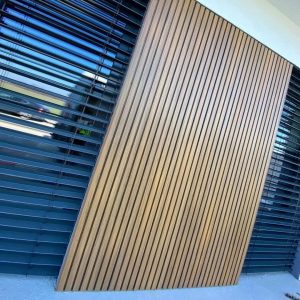Discover the Beauty and Functionality of Wood Wall PanelingDiscover the Beauty and Functionality of Wood Wall Paneling

Discover the Beauty and Functionality of Wood Wall Paneling
Wood wall paneling has remained a popular choice among interior designers who value its warmth, texture, and timeless appeal. Whether you want a homey rustic vibe or a sleek modern style, wood paneling may change your room. In this article, we’ll look at its advantages, disadvantages, and creative applications, as well as answer common questions to help you make an informed selection.
Why Wood Wall Paneling Stands Out
Wood wall paneling is more than simply aesthetically pleasing; it also provides functional benefits to your house or office. The versatility of
makes it suitable for both modern and traditional spaces. Here’s what makes it a standout option.
The Benefits of Wood Wall Paneling
1. Versatile Design Options
From natural oak to painted finishes, wood wall paneling is available in a variety of styles, textures, and colors. It complements almost every decorating style, from rustic chic to urban contemporary.
2. Enhanced Durability
High-quality wood wall paneling is designed to last. It can resist regular wear and tear, making it a dependable choice for busy homes or business settings.
3. Improved Insulation
Wood is a good insulator, providing both thermal and acoustic benefits. Installing wood wall paneling can help keep your rooms warmer in the winter and quieter all year.
Quick Tip: To maximize insulation benefits, pair wood paneling with foam or felt backing.
What to Watch Out For
While wood wall paneling has many benefits, it’s not without its challenges.
Drawbacks of Wood Wall Paneling
1. Higher Costs
Wood wall paneling might be more expensive than alternatives such as paint or wallpaper. The price includes both material costs and professional installation if necessary.
2. Maintenance Needs
Although wood is resilient, it requires maintenance to retain its beauty. Long-term upkeep requires regular dusting, polishing, and sealing.
3. Sensitivity to Humidity
Wood’s organic nature renders it susceptible to dampness. Untreated wood paneling in wet areas, such as bathrooms, can warp, swell, or grow mold.
Creative Ways to Use Wood Wall Paneling
If you believe wood wall paneling is only for historic homes, think again! Here are some new ideas for employing it in modern environments:
- Feature Walls: Install wood paneling on one wall to create a focal point in living rooms or bedrooms.
- Ceiling Accents: Extend wood paneling to the ceiling for a cozy cabin vibe.
- Half-Wall Wainscoting: Combine wood paneling with paint for a sophisticated two-tone effect.
- Built-In Shelving: Pair wood panels with built-in shelves for added functionality.
Types of Wood Wall Paneling at a Glance
Here’s a quick breakdown of popular wood wall paneling styles:
| Type | Description |
|---|---|
| Shiplap | Overlapping planks that create a clean, horizontal line design. |
| Beadboard | Panels with vertical grooves for a classic, textured appearance. |
| Reclaimed Wood | Eco-friendly option using salvaged wood with a rustic charm. |
| Board and Batten | Wide panels with thin strips (battens) that add depth and structure. |
Frequently Asked Questions About Wood Wall Paneling
1. Is Wood Wall Paneling Expensive?
The cost is determined by the type of wood used and the installation method. Solid hardwood is normally more expensive, while engineered wood and veneers provide more affordable options.
2. Can Wood Paneling Be Installed in Bathrooms?
Yes, but it requires proper treatment to withstand moisture. Consider using sealed or engineered wood in humid spaces.
3. How Do I Maintain Wood Wall Paneling?
Routine dusting and polishing are required. Remove stains with wood-safe cleaners and reapply sealants every few years to keep the finish looking good. With proper treatment,
can even be installed in high-moisture areas.
Practical Tips for Choosing and Installing Wood Wall Paneling
Here are some expert tips to guide your decision:
- Consider Your Space: Wood paneling performs best in well-ventilated environments. For high-humidity areas, choose treated or composite wood.
- Choose Sustainable Options: Reclaimed wood and certified sustainable materials are environmentally friendly choices.
- DIY or Professional Installation: For a flawless finish, hire a professional. If you’re on a budget, peel-and-stick wood panels offer an easy DIY alternative.
Is Wood Wall Paneling Right for You?
Few other materials can equal the combination of style, durability, and practicality that wood wall paneling offers. While it may necessitate an initial investment and some care, the result is a warm, inviting atmosphere that will withstand the test of time. Whether you’re renovating a single room or altering your entire home, wood wall paneling is an option to explore. Choosing the right
can elevate the overall look and feel of any room.